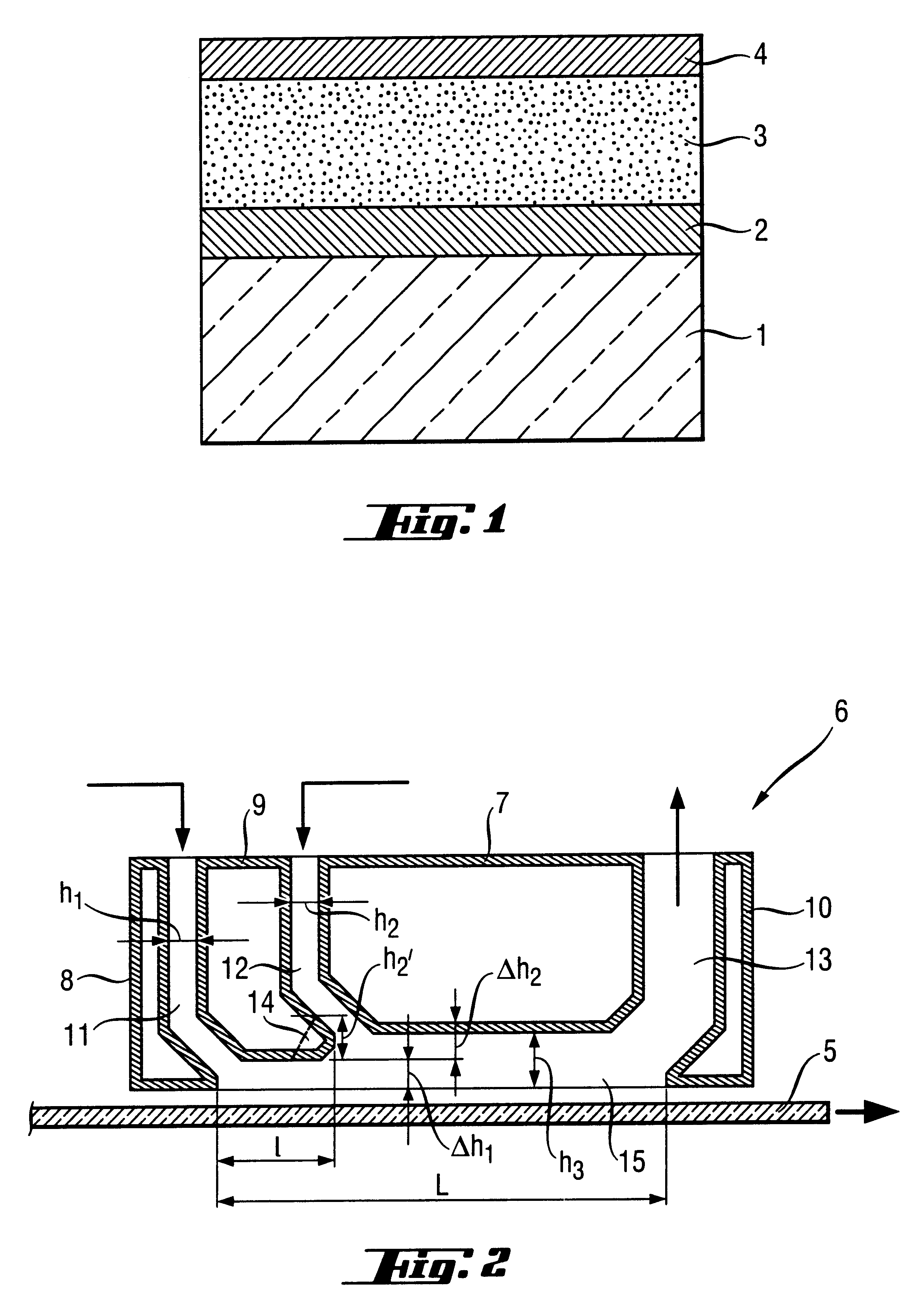Process and apparatus for providing a film with a gradient
a technology of gradient and process, applied in the field of glazing panels, can solve the problems of color not very desirable for aesthetic reasons, appearance in reflection, color may not be highly appreciated,
- Summary
- Abstract
- Description
- Claims
- Application Information
AI Technical Summary
Benefits of technology
Problems solved by technology
Method used
Image
Examples
examples 1 to 7
are produced according to the invention and are the result of mathematical modelling. They model, in accordance with FIG. 1, a substrate 1 made of clear soda-lime silicate glass 4 mm in thickness. This is coated with an F:SnO.sub.2 -based low-emissivity film 3 obtained in a known way by powder pyrolysis using DBTF, as described in the aforementioned patents, and then with an external film 4 based on a mixed silicon and aluminium oxide, also with fluorine, this film also being obtained in a known way by CVD using tetraorthosilicate TEOS, aluminium hexafluoroacetylacetonate and oxygen, in accordance with the teaching of the French application FR-94 / 13911 published under the number FR-2 727 107 corresponding to the patent EP-0,712,815. Sandwiched between the substrate 1 and the functional film 3 is an intermediate film 2 having a decreasing refractive index gradient, that is to say the refractive index of which progressively decreases through its thickness from its interface with the g...
examples 10 to 12
These examples were produced using the nozzle described above, by depositing, on a substrate of soda-lime silicate glass 4 mm thick, SnO.sub.2 / SiO.sub.2 -based films whose refractive index decreases progressively on going away from the glass.
The first slot 11 is supplied with dibutyltin diacetate DBTA and the second slot 12 with TEOS.
Table 4 below-indicates, for these three examples, the ratio R of the TEOS and DETA volume flowrates, the thickness t in nm of the film and the values, ri (min) and ri (max), according to the conventions adopted in Table 1:
These three substrates thus coated were analyzed by SIMS (Secondary Ion Mass Spectroscopy): FIGS. 3, 4 and 5 correspond respectively to the films according to Examples 10, 11 and 12. The graphs represent, as abscissae, the depth of the analysis in micrometers and, as ordinates, the number of counts per second on a logarithmic scale.
Only the elements which are more particularly relevant to the invention are depicted in these three gra...
PUM
| Property | Measurement | Unit |
|---|---|---|
| thickness | aaaaa | aaaaa |
| thickness | aaaaa | aaaaa |
| thickness | aaaaa | aaaaa |
Abstract
Description
Claims
Application Information
 Login to View More
Login to View More - R&D
- Intellectual Property
- Life Sciences
- Materials
- Tech Scout
- Unparalleled Data Quality
- Higher Quality Content
- 60% Fewer Hallucinations
Browse by: Latest US Patents, China's latest patents, Technical Efficacy Thesaurus, Application Domain, Technology Topic, Popular Technical Reports.
© 2025 PatSnap. All rights reserved.Legal|Privacy policy|Modern Slavery Act Transparency Statement|Sitemap|About US| Contact US: help@patsnap.com



